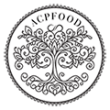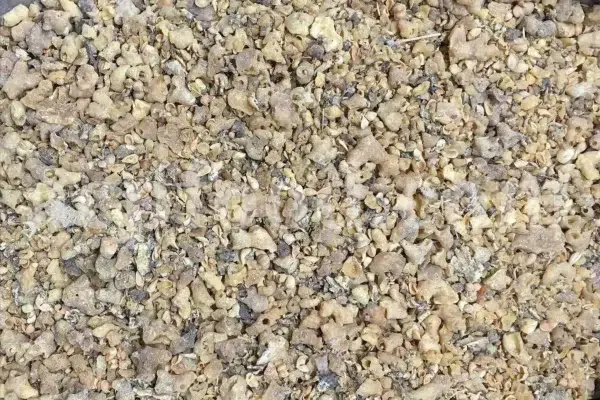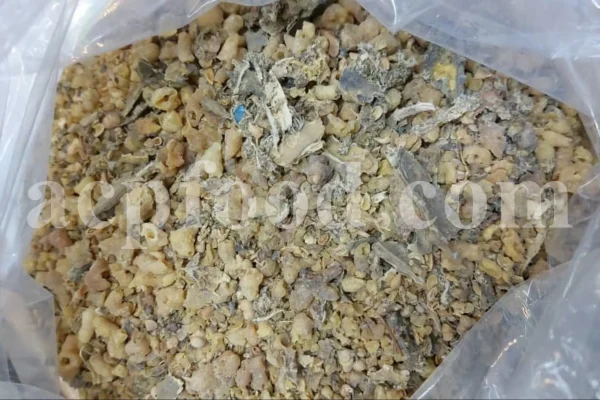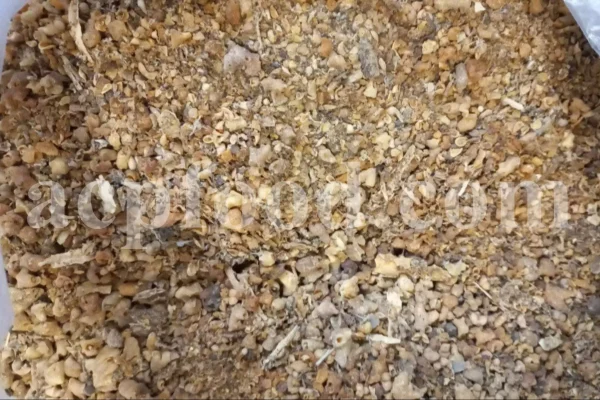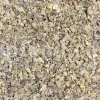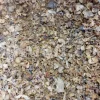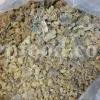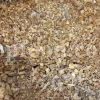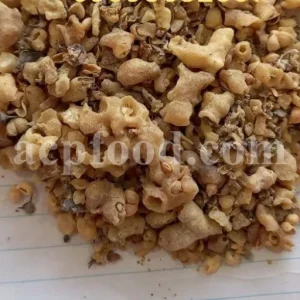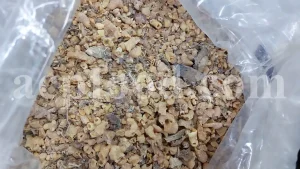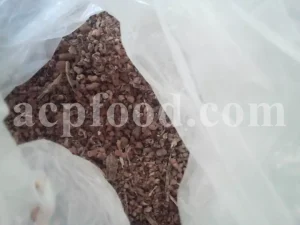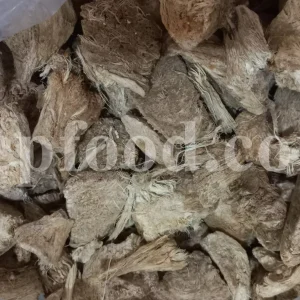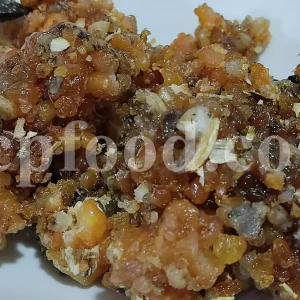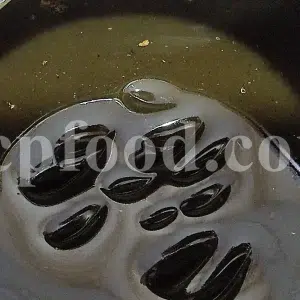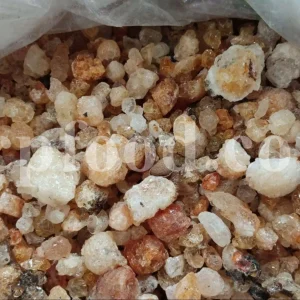GENERAL DATA
Plant parts: Sap
Cultivation mode: Wild collection
In manufacturing: Pharmaceutical
In food: –
🌿 Industries That Use Euphorbia Sap (from Euphorbia helioscopia L.)
Euphorbia helioscopia, known as Sun Spurge, is a small herbaceous plant found across Europe, Asia, and North Africa. It produces a white, toxic latex (sap) that, when dried, has been used cautiously in folk medicine, ritual practices, and pest control.
Despite its toxicity, the dried sap is historically valued in external treatments and magico-spiritual applications due to its acrid potency.
1. Traditional Medicine & Ethnobotany
Euphorbia sap has a longstanding but cautious presence in folk remedies, particularly for external applications:
-
Wart and mole treatment: Dried sap applied to growths to “burn” or dissolve them
-
Joint and muscle pain: Used in poultices in very diluted form
-
Laxative effect (historical use of seeds): Dangerous and no longer advised
-
Vermifuge (internal parasite expulsion): Rare and high-risk, historically used in Persian and Chinese folk medicine
⚠️ Note: Highly irritant and caustic; internal use is not recommended due to strong purgative and toxic properties.
✅ Common Forms: Dried sap flakes, powdered resin, external liniments
2. Pest Control & Agricultural Uses
Due to its acrid latex and toxicity, the sap is sometimes used in natural pest control:
-
Rodent and insect repellent in storage or barn areas
-
Fungicidal wash on bark or wounds (diluted)
-
Soil detox in small-scale organic gardening (as a rotational strategy)
✅ Traditionally used in rural agriculture as a repelling barrier around crops or food stores
3. Ritual, Magical & Folk Spiritual Practices
In Maghrebi and Middle Eastern esoteric traditions, dried Euphorbia sap is:
-
Burned in fumigation rituals to drive out malevolent spirits
-
Used in protective sachets or ash-based powders for jinn removal
-
Symbolically associated with “burning away” negative energies
Often paired with asafoetida, rue, and sulfur in black magic reversal rituals
✅ Sometimes called “Burning Milk” or “Devil’s Sap” in occult folklore
4. Apothecary & Export Market (Historical)
Historically traded in small volumes by Eastern and Central apothecaries as part of:
-
Skin treatment kits (esp. for warts and calluses)
-
Rare incenses and traditional ointments
-
Folk detox blends (long banned from internal use in modern herbalism)
Now primarily found in ethnobotanical or ritualist shops under clear caution labeling
✅ Summary of Key Applications
| Industry | Common Uses |
|---|---|
| Traditional Medicine | Wart removal, external irritant, pain liniment (cautiously used) |
| Agriculture & Pest Control | Repellent barrier, rodent deterrent, fungicide (diluted) |
| Ritual & Spiritual Use | Jinn removal incense, banishment rituals, protective fumigation |
| Apothecary & Ethnobotany | Historical poultices, powders, incense blends |
⚠️ Key Features & Warnings
-
🌿 Highly caustic latex that can cause skin burns and severe irritation
-
🧪 Contains diterpenes and euphorbon — toxic and inflammatory compounds
-
🛑 Not edible — internal use is strongly discouraged
-
🧙 Used symbolically for cutting, burning, or purging energies in folk systems
-
✅ Dried form is less volatile, but must be handled with care
PRODUCT NAME IN DIFFERENT LANGUAGES
Persian Name: فرفیون/ Farfioun
German Name (Deutschland, Austria, Switzerland): Sonnenwend-Wolfsmilch
French Name (France, Belgium, Switzerland, Quebec): Euphorbe réveille-matin
HARVEST CALENDAR
Feb
Mar
Apr
May
Jun
Jul
Aug
Sep
Oct
Nov
Dec
To order Euphorbia latex, please contact us.
About Euphorbia
Euphorbia is an annual plant that reaches fifty centimeters in height and has many species. This plant has a relatively thin, straight, elongated, and green stem with red veins, few leaves with a circular cross-section, which is regularly divided into five primary sub-stems. At the end of each primary sub-stem, usually three leaves grow and among these leaves some secondary and smaller sub-stems grow, and the end of these stems also have several leaves. In this way, the leaves of this plant grow without petioles and in the form of umbrellas. Five leaves grow regularly at the junction of the primary sub-stems with the main stem.
The sap of the stem of the Euphorbia plant is white. But after drying, it becomes yellowish gray and the older it gets, the darker and reddish it becomes. The aroma and taste of this sap is very spicy. The best Euphorbia sap should be fresh, pure, and yellowish gray with a sharp aroma and taste that bites the tongue. It should be porous and light and dissolve quickly in water and olive oil. The leaves of this plant are small, almost drop-shaped, and sometimes heart-shaped, and their side is often saw-like. The flowers are very small and greenish yellow and grow at the junction of leaves and stems.
The fruits are very small and pea-sized pod which is green at first. But after it is completely dried, it turns into light and dull brown. Three swollen parts can be seen on the surface of this fruit, and there is a narrow groove between each part, and after full ripening, these grooves crack. Inside each pod there are several very small, almost spherical and pointed seeds that have an uneven and slightly wrinkled surface.
Euphorbia Sap/Latex Temperament
Fourth degree of hot and dry.
Euphorbia Sap/Latex Health Benefits
Sun Spurge sap expels phlegm from the body. Treats mental disorders.
It cures parkinson’s, paralysis, convulsions, vertigo, epilepsy, strokes, nightmares, polydipsia, splenitis, colic, sciatica, back pain caused by phlegm, joint pain and coldness of kidney.
If you sprinkle 0.4 g of Euphorbia sap powder with egg yolk and eat it, it is very useful for paralysis of each part of the organs.
Gargling solution of Euphorbia sap and warm water improves epilepsy. Inhaling a lot of Sun Spurge sap helps to cure paralysis.
Euphorbia Sap/Latex Side Effects
Testicles, ovaries, and the lower parts of the intestines.
Hot temperament people and pregnant women.
Euphorbia sap is highly pyrogenic. Especially fresh one.
Eating 7g of Sun Spurge sap causes sleepiness, hot flashes, and severe internal burning, hiccups, severe anxiety, and ulcers in the stomach and intestines, and after three days it will result in death.
Euphorbia Sap/Latex Dose
0.4 gram.
Euphorbia Sap/Latex Modifier
Damask Rose oil for the testicles and ovaries.
Commiphora mukul, Licorice root, Cinnamon, Valerian root, Gum Tragacanth, Gum Arabic and sweet almond oil for the lower part of the intestine.
If someone is poisoned by eating Sun Spurge sap, you should grease his body with suitable oils and feed him or her with Pomegranate juice, sour-sweet apple, lemon juice, barley potage, Damask Rose oil, Camphor and Rose Water. Then sit him or her in cold water and give him sips of Rose water. Then put cold compresses (such as Rosewater or Chicory) on their liver.
To order Euphorbia latex, please contact us.
